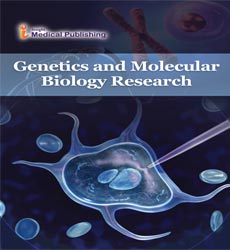Genetic and Molecular Characterization with Robinow Syndrome
Narender Singh*
Center for Bio-Technology, Institute of Science & Technology, JNTU University, India
- Corresponding Author:
- Narender Singh
Center for Bio-Technology
Institute of Science & Technology, JNTU University, India
E-mail: narender.s@gmail.com
Received Date: March 18, 2021; Accepted Date: March 25, 2021; Published Date: March 29, 2021
Citation: Singh N. Genetic and Molecular Characterization with Robinow Syndrome. Gen Med Biol Res. Vol 5 Iss No.2: 44.
Copyright: © 2021 Singh N, et al. This is an open-access article distributed under the terms of the Creative Commons Attribution License, which permits unrestricted use, distribution, and reproduction in any medium, provided the original author and source are credited.
Commentary
Robinow syndrome (RS) is a rare genetic disorder characterized by limb shortening, craniofacial/orodental abnormalities, and genital hypoplasia. Genetic studies have linked the autosomal recessive form of the disorder to the ROR2 gene on position 9 of the long arm of chromosome 9. The gene is responsible for aspects of bone and cartilage growth. This same gene is involved in causing autosomal dominant brachydactyly B.
Diagnosis for Robinow syndrome is suspected by family history and clinical findings confirmed by typical ROR-2 biallelic pathogenic variants identified by molecular genetic testing. Treatment for various manifestations will usually be addressed by a multidisciplinary team.
Open Access Journals
- Aquaculture & Veterinary Science
- Chemistry & Chemical Sciences
- Clinical Sciences
- Engineering
- General Science
- Genetics & Molecular Biology
- Health Care & Nursing
- Immunology & Microbiology
- Materials Science
- Mathematics & Physics
- Medical Sciences
- Neurology & Psychiatry
- Oncology & Cancer Science
- Pharmaceutical Sciences
